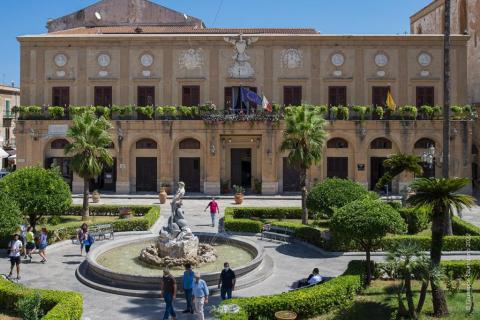Originally the residence of the Norman king, it later became the Town Hall and then a Seminary. It was founded as a Royal Palace together with the Cathedral and the Abbey and, according to some, it even predates them, although that is not mentioned in the Norman charter of privileges. Arches, mullioned windows and rosettes made of lava stone, similar to those in the Benedictine Dormitory, were discovered in Via Arcivescovado. A private passage connected the palace to the cathedral. With the untimely death of the king, it gradually fell into ruin. In the 15th century, the extensions and adaptations in the northern part of the building on Piazza Duomo affirmed the growing importance of secular power alongside the Cathedral, due to its new use as the City Palace. Symmetrically, in Via Arcivescovado on the north-eastern side of the Royal Palace, the Seminario dei Chierici was established in 1589 by Archbishop Ludovico II Torres, who endowed it with his own library with ancient illuminated manuscripts, a picture gallery and a garden. In the 18th century, Archbishop Francesco Testa had the Seminary raised to build the dormitories, and commissioned Ignazio Marabitti with the beautiful entrance gate (1772), surmounted by the family coat of arms. A storey was also added to the Town Hall, and the façade was enriched with elegant decoration, a balcony and a portico, later partly closed. The two different functions corresponded to two façades: one more secluded and linked to the Archbishop's Palace below; the other facing the Cathedral and the town through Piazza Duomo. Now known as the City Hall, Mayor Alberto Arcidiacono holds his council meeting in the splendid Red Room, where the political life of the city takes place.
Source: Press Office
